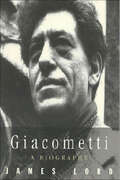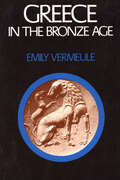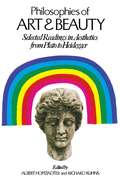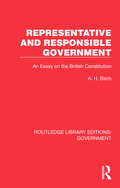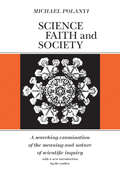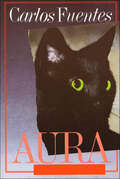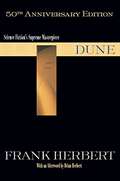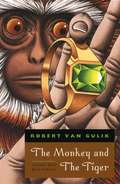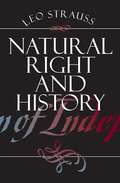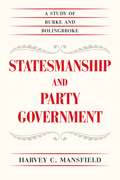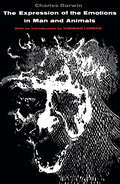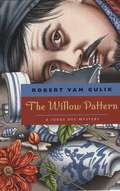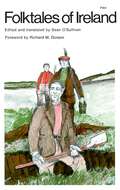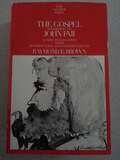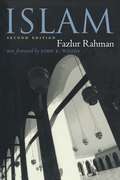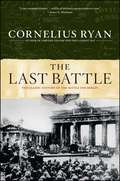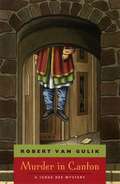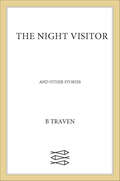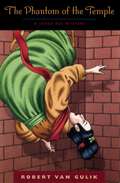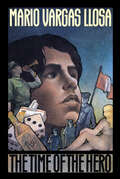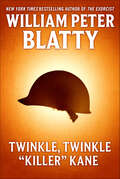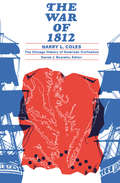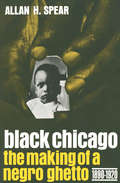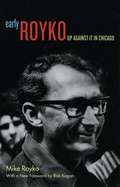- Table View
- List View
Giacometti: A Biography
by James LordThe work of one of the towering creative spirits of the century, Alberto Giacometti's visionary sculptures and paintings from a testament to the artist's intriguing life story. From modest beginnings in a Swiss village, Giacometti went on to flourish in the picturesque milieu of prewar Paris and then to achieve international acclaim in the fifties and sixties. Picasso, Balthus, Samuel Beckett, Stravinsky and Sartre have parts in his story, along with flamboyant art dealers, whores, shady drifters, unscrupulous collectors, poets and thieves. Women were a complex yet important element of his life--particularly his wife, Annette, and his last mistress and model, Caroline--as was the intimate relationship he shared with his brother Diego, who was both Alberto's confidant and collaborator.James Lord was personally acquainted with Giacometti and his entourage, and combines firsthand experience with a unique knowledge gathered during many years of observation and research. In this exceptional biography Lord unfolds the personal history of a man who managed to achieve a heroic destiny by remaining utterly true to himself and to his calling.Giacometti: A Biography was nominated for the National Book Critics Circle Award. James Lord has subsequently published three volumes of memoirs. In recognition of his contribution to French culture he has been made an officer of the Legion of Honour.
Greece in the Bronze Age
by Emily TownsendFrom the arrival of the first men in Greece to the fall of the Mycenaean palace-town in the thirteenth century B.C., this work captures the essential qualities of each period of pre-classical civilization: the slow development of the Neolithic culture, the rich and original Early Bronze Age, the fruitful yet tragic encounter between Minoans and Mycenaean Empire. The legacy of Mycenaean religion and art is reviewed, including material found in excavated palaces and their stored wealth of frescoes, carved ivories, silver and gold jewelry, vases, and bronze weapons. The author deals with the invasions of Greece, the growth of a Greek language and some of the problems of Linear B, and the impact of Crete and the East upon the mainstream of Greek development.
Philosophies of Art & Beauty: Selected Readings in Aesthetics from Plato to Heidegger
by Albert Hofstadter and Richard KuhnsThis anthology is remarkable not only for the selections themselves, among which the Schelling and the Heidegger essays were translated especially for this volume, but also for the editors' general introduction and the introductory essays for each selection, which make this volume an invaluable aid to the study of the powerful, recurrent ideas concerning art, beauty, critical method, and the nature of representation. Because this collection makes clear the ways in which the philosophy of art relates to and is part of general philosophical positions, it will be an essential sourcebook to students of philosophy, art history, and literary criticism.
Representative and Responsible Government: An Essay on the British Constitution (Routledge Library Editions: Government)
by A H BirchOriginally published in 1964, this book remains a seminal source for contemporary political scientists and offers exceptional insights into notions of responsibility. Wahlke (1971) describes it as ‘one of the best analytical surveys of representation.’ The book is a compact and critical essay on the British constitution which reveals the realities of British politics in the second half of the 20th Century by showing the extent to which theory and reality agree and differ.
Science, Faith and Society: A searching examination of the meaning and nautre of scientific inquiry
by Michael PolanyiIn its concern with science as an essentially human enterprise, Science, Faith and Society makes an original and challenging contribution to the philosophy of science. On its appearance in 1946 the book quickly became the focus of controversy. Polanyi aims to show that science must be understood as a community of inquirers held together by a common faith; science, he argues, is not the use of "scientific method" but rather consists in a discipline imposed by scientists on themselves in the interests of discovering an objective, impersonal truth. That such truth exists and can be found is part of the scientists' faith. Polanyi maintains that both authoritarianism and scepticism, attacking this faith, are attacking science itself.
Aura: A Novel
by Carlos FuentesThis eBook edition of Carlos Fuentes' novel includes only the English translation by Lysander Kemp. The Spanish text is not included.Felipe Montero is employed in the house of an aged widow to edit her deceased husband's memoirs. There Felipe meets her beautiful green-eyed niece, Aura. His passion for Aura and his gradual discovery of the true relationship between the young woman and her aunt propel the story to its extraordinary conclusion.
Drumbeat on the Shore
by Marjory HallFor Abigail Bates, there could be no better place to live in the whole world. She had the sand dunes and the sea for a vast front yard. Her father, Captain Simeon, was keeper of the Scituate lighthouse at Cedar Point. Their frame house overlooked the harbor. However busy she was, Nabby always had time to pause and scan the horizon for the white sails of a brig or a sloop, so peaceful against the blue that it was hard to realize they might be a threat. It was the summer of 1814, and war seemed remote in New England.... “Mr. Madison’s war,” the Federalists called it scornfully, considering that “ those dunderheads in Washington ” had invented it and that it had nothing to do with Massachusetts. But the boys and younger men in Scituate were enraged by the blockade that had closed the ports of the Delaware and Chesapeake. News from far away came slowly and was never good news. Becky, Nabby’s older sister, was wan and worried because Thomas, whom she dearly loved, was away on a secret mission that had something to do with outwitting the British and their intolerable blockade. When Peter Trumbull returns mysteriously to Scituate by night and enlists Nabby’s help, the war becomes real for her in a very personal way. It becomes real suddenly for the whole town when the British fire the ships in the harbor... when the shipyards up the North River are closed... and when the militia are stationed at the lighthouse... This is the exciting story of Nabby Bates and her sister Becky--two girls whose heroism in the War of 1812 is part of American legend. Marjory Hall has brought them to vivid life in this excellent historical re-creation of Massachusetts’ part in the “ war at sea ” with the British. It is also a warm and lively account of the independent Bates family, every one of them an active and interesting person, and of their life at the foot of a famous American lighthouse during an important period in our country’s past.
Dune: Deluxe Edition (Dune #1)
by Frank Herbert• DUNE: PART TWO • THE MAJOR MOTION PICTUREDirected by Denis Villeneuve, screenplay by Denis Villeneuve and Jon Spaihts, based on the novel Dune by Frank Herbert • Starring Timothée Chalamet, Zendaya, Rebecca Ferguson, Josh Brolin, Austin Butler, Florence Pugh, Dave Bautista, Christopher Walken, Stephen McKinley Henderson, Léa Seydoux, with Stellan Skarsgård, with Charlotte Rampling, and Javier BardemFrank Herbert&’s classic masterpiece—a triumph of the imagination and one of the bestselling science fiction novels of all time.Set on the desert planet Arrakis, Dune is the story of Paul Atreides—who would become known as Muad'Dib—and of a great family's ambition to bring to fruition mankind's most ancient and unattainable dream.A stunning blend of adventure and mysticism, environmentalism and politics, Dune won the first Nebula Award, shared the Hugo Award, and formed the basis of what is undoubtedly the grandest epic in science fiction.
The Monkey and The Tiger: Judge Dee Mysteries (The Judge Dee Mysteries)
by Robert van GulikThe Monkey and The Tiger includes two detective stories, "The Morning of the Monkey" and "The Night of the Tiger." In the first, a gibbon drops an emerald in the open gallery of Dee's official residence, leading the judge to discover a strangely mutilated body in the woods—and how it got there. In the second, Dee is traveling to the imperial capital to assume a new position when he is separated from his escort by a flood. Marooned in a large country house surrounded by fierce bandits, Dee confronts an apparition that helps him solve a mystery.
Natural Right and History: Lectures And Essays By Leo Strauss, 1937-1946 (Walgreen Foundation Lectures)
by Leo StraussIn this classic work, Leo Strauss examines the problem of natural right and argues that there is a firm foundation in reality for the distinction between right and wrong in ethics and politics. On the centenary of Strauss's birth, and the fiftieth anniversary of the Walgreen Lectures which spawned the work, Natural Right and History remains as controversial and essential as ever. "Strauss . . . makes a significant contribution towards an understanding of the intellectual crisis in which we find ourselves . . . [and] brings to his task an admirable scholarship and a brilliant, incisive mind."—John H. Hallowell, American Political Science Review Leo Strauss (1899-1973) was the Robert Maynard Hutchins Distinguished Service Professor Emeritus in Political Science at the University of Chicago.
Statesmanship and Party Government: A Study of Burke and Bolingbroke
by Harvey C. MansfieldIn this incisive look at early modern views of party politics, Harvey C. Mansfield examines the pamphlet war between Edmund Burke and the followers of Henry St. John, First Viscount Bolingbroke during the mid-eighteenth century. In response to works by Bolingbroke published posthumously, Burke created his most eloquent advocacy of the party system. Taking an interdisciplinary approach to the material, Mansfield shows that present-day parties must be understood in the light of the history of party government. The complicated organization and the public actions of modern parties are the result, he contends, and not the cause of a great change in opinion about parties. Mansfield points out that while parties have always existed, the party government that we know today is possible only because parties are now considered respectable. In Burke’s day, however, they were thought by detractors to be a cancer in a free polity. Even many supporters of the parties viewed them as a dangerous instrument, only to be used cautiously by statesmen in dire times. Burke, however, was an early champion of the party system in Britain and made his arguments with a clear-eyed realism. In Statesmanship and Party Government, Mansfield provides a skillful evaluation of Burke’s writings and sheds light present-day party politics through a profound understanding of the historical background of the their inception.
the Expression of the Emotions in Man and Animals (Cambridge Library Collection - Darwin, Evolution And Genetics Ser.)
by Charles DarwinDarwin's work of 1872 still provides the point of departure for research in the theory of emotion and expression. Although he lacked the modern research tool of cybernetics, his basic methods have not been improved upon: the study of infants, of the insane, of paintings and sculpture, of some of the commoner animals; the use of photographs of expression submitted to different judges; and the comparative study of expression among different peoples. This new edition will be warmly welcomed by those behavioral scientists who have recently shown an intense interest in the scientific study of expression. Lay readers, too, will be struck by the freshness and directness of this book, which includes, among other data, Darwin's delightfully objective analysis of his own baby's smiles and pouts.
The Willow Pattern: A Judge Dee Mystery (The Judge Dee Mysteries)
by Robert van GulikJudge Dee has been appointed emergency governor of the plague- and drought-ridden Imperial City. As his guards help the city fend off a popular uprising, an aristocrat from one of the oldest families in China suffers an "accident" in a deserted mansion.In The Willow Pattern, the illustrious judge uses his trademark expertise to unravel the mysteries of the nobleman, a shattered vase, and a dead bondmaid. Along the way he encounters a woman who fights with loaded sleeves, a nearly drowned courtesan, and an elaborate trap set for a murderer. Packed with suspense, violence, and romance, The Willow Pattern won’t disappoint Judge Dee’s legions of loyal fans."The China of old, in Mr. van Gulik’s skilled hands, comes vividly alive again."—Allen J. Hubin, New York Times Book Review
Folktales of Ireland
by Sean O’SullivanFew countries can boast such a plentitude of traditional folktales as Ireland. In 1935, the creation of The Irish Folklore Commission set in motion the first organized efforts of collecting and studying a multitude of folktales, both written as well as those of the Irish oral tradition. The Commission has collected well over a million pages of manuscripts. Folktales of Ireland offers chief archivist Sean O'Sullivan's representation of this awe-inspiring collection. These tales represent the first English language collection of Gaelic folktales. "Without doubt the finest group of Irish tales that has yet been published in English."—The Guardian "O'Sullivan writes out of an intimacy with his subject and an instinctive grasp of the language of the originals. He tells us that his archives contain more than a million and a half pages of manuscript. If Mr. O'Sullivan translates them, I'll read them."—Seamus Heaney, New Statesman "The stories have an authentic folktale flavor and will satisfy both the student of folklore and the general reader."—Booklist
The Gospel According To John: Chapters I-xii (Anchor Bible Commentaries Ser.)
by Raymond E. BrownIn the first volume of Raymond E. Brown’s magisterial three-volume commentary on the Gospel According to John, all of the major Johannine questions—of authorship, composition, dating, the relationship of John to the Synoptics (Mark, Matthew, and Luke)—are discussed. The important theories of modern biblical scholarship concerning John are weighed against the evidence given in the text and against prevailing biblical research. In sum, what is attempted is a synthesis of the major scholarly insights that bear on the Fourth Gospel. The translation—as Father Brown states at the outset—strives not for any formal beauty but rather for an accurate and contemporary version: “the simple, everyday Greek of the Gospel has been rendered into the ordinary American English of today.” The result is a translation that will strike the reader with uncommon immediacy. Father Brown also analyzes, in the appendixes, the meaning, use, and frequency of certain key words and phrases that occur in John, and examines the differences between the Johannine and Synoptic treatments of the miracle stories. The chapters of the Gospel translated here in Volume 29 (1–12) comprise the Prologue, which opens with the famous “In the beginning was the Word,” and the Book of Signs, an account of the miracles of Jesus and of his ministry.
Islam
by Fazlur RahmanFazlur Rahman's Islam is aptly titled, in that this slim volume constitutes an incisive and surprisingly comprehensive history and analysis of Islam—its history, its conflicts, its legacy—and its prospects. From Mohammed to the late twentieth century, Rahman traces the development of Islam as a religion and, more importantly, as an intellectual tradition, offering both an easily understood introduction to the faith and an impassioned argument for its future direction.
The Last Battle: The Classic History of the Battle for Berlin (A History Bestseller)
by Cornelius RyanThe classic account of the final offensive against Hitler&’s Third Reich.The Battle for Berlin was the culminating struggle of World War II in the European theater, the last offensive against Hitler&’s Third Reich, which devastated one of Europe&’s historic capitals and marked the final defeat of Nazi Germany. It was also one of the war&’s bloodiest and most pivotal battles, whose outcome would shape international politics for decades to come. The Last Battle is Cornelius Ryan&’s compelling account of this final battle, a story of brutal extremes, of stunning military triumph alongside the stark conditions that the civilians of Berlin experienced in the face of the Allied assault. As always, Ryan delves beneath the military and political forces that were dictating events to explore the more immediate imperatives of survival, where, as the author describes it, &“to eat had become more important than to love, to burrow more dignified than to fight, to exist more militarily correct than to win.&” The Last Battle is the story of ordinary people, both soldiers and civilians, caught up in the despair, frustration, and terror of defeat. It is history at its best, a masterful illumination of the effects of war on the lives of individuals, and one of the enduring works on World War II.
Murder in Canton: A Judge Dee Mystery (The Judge Dee Mysteries)
by Robert van GulikBrought back into print in the 1990s to wide acclaim, re-designed new editions of Robert van Gulik's Judge Dee Mysteries are now available. Written by a Dutch diplomat and scholar during the 1950s and 1960s, these lively and historically accurate mysteries have entertained a devoted following for decades. Set during the T'ang dynasty, they feature Judge Dee, a brilliant and cultured Confucian magistrate disdainful of personal luxury and corruption, who cleverly selects allies to help him navigate the royal courts, politics, and ethnic tensions in imperial China. Robert van Gulik modeled Judge Dee on a magistrate of that name who lived in the seventh century, and he drew on stories and literary conventions of Chinese mystery writing dating back to the Sung dynasty to construct his ingenious plots.Murder in Canton takes place in the year 680, as Judge Dee, recently promoted to lord chief justice, is sent incognito to Canton to investigate the disappearance of a court censor. With the help of his trusted lieutenants Chiao Tai and Tao Gan, and that of a clever blind girl who collects crickets, Dee solves a complex puzzle of political intrigue and murder through the three separate subplots "the vanished censor," "the Smaragdine dancer," and "the Golden Bell." An expert on the art and erotica as well as the literature, religion, and politics of China, van Gulik also provides charming illustrations to accompany his engaging and entertaining mysteries.
The Night Visitor: And Other Stories
by B. TravenThe Night Visitor is a collection of stories by the late author B Traven.
The Phantom of the Temple: A Judge Dee Mystery (The Judge Dee Mysteries)
by Robert van GulikJudge Dee presided over his imperial Chinese court with a unique brand of Confucian justice. A near mythic figure in China, he distinguished himself as a tribunal magistrate, inquisitor, and public avenger. Long after his death, accounts of his exploits were celebrated in Chinese folklore, and later immortalized by Robert van Gulik in his electrifying mysteries. In The Phantom of the Temple, three separate puzzles—the disappearance of a wealthy merchant's daughter, twenty missing bars of gold, and a decapitated corpse—are pieced together by the clever judge to solve three murders and one complex, gruesome plot. “Judge Dee belongs in that select group of fictional detectives headed by the renowned Sherlock Holmes. I assure you it is a compliment not given frivolously.”—Robert Kirsch, Los AngelesTimes Robert Van Gulik (1910-67) was a Dutch diplomat and an authority on Chinese history and culture. He drew his plots from the whole body of Chinese literature, especially from the popular detective novels that first appeared in the seventeenth century.
The Time of the Hero: A Novel
by Mario Vargas LlosaThe action of The Time of the Hero, Nobel Prize-winning author Mario Vargas Llosa's first novel, takes place at the Leoncio Prado Military Academy in Lima, Peru. There, four angry cadets who have formed an inner circle in an attempt to ward off the boredom and stifling confinement of the military academy set off a chain of events that starts with a theft and leads to murder and suicide. The Time of the Hero presents, with great accuracy and power, the cadets' nightmare life: brutal initiation rights, poker in the latrines, drinking contests; and, above all else, the strange military code which, whether broken or followed, can only destroy.When The Time of the Hero was first published in Peru in 1962, it was considered so scandalous that a thousand copies were burned in an official ceremony at the Leoncio Prado Military Academy. That same year, the book received the Biblioteca Breve Prize, an award given to the best work of fiction in the Spanish language."…[A]s with other fine writers, Vargas functions on more than a single level of meaning." - The New York Times
Twinkle, Twinkle "Killer" Kane
by William Peter BlattyFrom William Peter Blatty, the New York Times bestselling author of The Exorcist, comes his dark comic novel about military madness, Twinkle, Twinkle, "Killer" Kane.After a nervous breakdown during a moon launch, astronaut Billy Cutshaw was committed to a military asylum and placed under the care of Colonel Hudson Kane. During their therapy sessions, Kane finds himself cross-examined about his beliefs on good and evil, forcing him to face the personal demons that have haunted him since his tour in Vietnam.This story was the basis of Blatty's later expanded novel and the Golden Globe-nominated film adaptation, both titled The Ninth Configuration.At the Publisher's request, this title is being sold without Digital Rights Management Software (DRM) applied.
The War of 1812 (The\chicago History Of American Civilization Ser. #Vol. 22)
by Harry L. Coles The Chicago History of American CivilizationThis compact history of the war attempts to separate myth from reality. Professor Coles narrates the main operations on both land and sea of the three-year struggle. He examines the conflict from the British (and Canadian) as well as the American point of view, relating events in America to the larger war going on in Europe. "A balanced analysis of tactics and strategy, this book also summarizes succinctly and clearly recent scholarship on causes and describes briefly the war's military, economic, and political consequences. Coles has surveyed thoroughly the existing literature but arrives at a number of independent judgments. It is the best single-volume account of the war in all its aspects. In recounting sea battles, Coles puts aside the patriotic blinders that have for so long prevented a sensible understanding of American capabilities and strategic necessities; thus American naval victories are put in a proper perspective. And in dealing with land engagements, he has shunned the mocking and amused attitude which has so often passed for historical judgment. Undergraduates will be stimulated by the hints of modern parallels and will find useful the excellent annotated bibliography and simple maps."—Choice
Black Chicago: The Making of a Negro Ghetto, 1890–1920
by Allan H. SpearAllan Spear explores here the history of a major Negro community during a crucial thirty-year period when a relatively fluid patter of race relations gave way to a rigid system of segregation and discrimination. This is the first historical study of the ghetto made famous by the sociological classics of St. Clair Drake, E. Franklin Frazier, and others—by the novels of Richard Wright, and by countless blues songs. It was this ghetto that Martin Luther King, Jr., chose to focus on when he turned attention to the racial injustices of the North. Spear, by his objective treatment of the results of white racism, gives an effective, timely reminder of the serious urban problems that are the legacy of prejudice.
Early Royko: Up Against It in Chicago
by Mike RoykoCombining the incisive pen of a newspaperman and the compassionate soul of a poet, Mike Royko became a Chicago institution—in Jimmy Breslin’s words, "the best journalist of his time." Early Royko: Up Against It in Chicago will restore to print the legendary columnist’s earliest writings, which chronicle 1960s Chicago with the moral vision, ironic sense, and razor-sharp voice that would remain Royko’s trademark. This collection of early columns from the Chicago Daily News ranges from witty social commentary to politically astute satire. Some of the pieces are falling-down funny and others are tenderly nostalgic, but all display Royko’s unrivaled skill at using humor to tell truth to power. From machine politicians and gangsters to professional athletes, from well-heeled Chicagoans to down-and-out hoodlums, no one escapes Royko’s penetrating gaze—and resounding judgment. Early Royko features a memorable collection of characters, including such well-known figures as Hugh Hefner, Mayor Richard J. Daley, and Dr. Martin Luther King. But these boldfaced names are juxtaposed with Royko’s beloved lesser knowns from the streets of Chicago: Mrs. Peak, Sylvester "Two-Gun Pete" Washington, and Fats Boylermaker, who gained fame for leaning against a corner light pole from 2 a.m. Saturday until noon Sunday, when his neighborhood tavern reopened for business. Accompanied by a foreword from Rick Kogan, this new edition will delight Royko’s most ardent fans and capture the hearts of a new generation of readers. As Kogan writes, Early Royko "will remind us how a remarkable relationship began—Chicago and Royko, Royko and Chicago—and how it endures."
